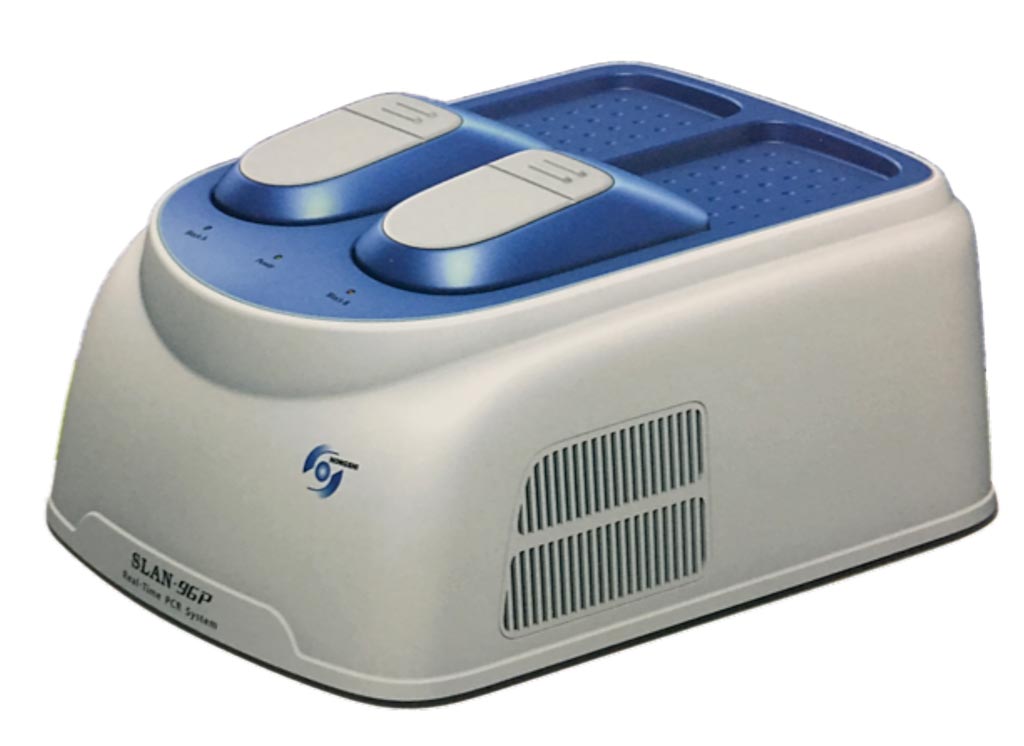Unexpected Prevalence of High-Risk HPV Types Demonstrated
By LabMedica International staff writers
Posted on 13 Jun 2019
Low- and middle-income countries have high incidences of cervical cancer linked to human papillomavirus (HPV), and without resources for cancer screenings these countries bear 85% of all cervical cancer cases.Posted on 13 Jun 2019
In many of these countries, cervical cancer is the leading cause of cancer-related mortality and attributable to limited screening programs. A lack of funding, trained cytopathologists to review Papanicolaou test slides, and other health care providers for follow-up care that comprise the needed infrastructure does not allow for routine cervical cancer screening.

Image: The SLAN-96 real-time polymerase chain reaction (PCR) instrument (Photo courtesy of QuanDx/Zeesan Biotech).
Scientists from Dartmouth College (Lebanon, NH, USA) and their Honduran colleagues collected cervical samples using cervical brushes on 1,732 participants who were employees at a manufacturing site in San Pedro Sula, Honduras, for Papanicolaou test and hrHPV testing. All cervical brushes and corresponding Papanicolaou test slides were assigned a unique study identification number.
After processing the dried cervical brushed were rehydrated in the assay tubes that contained lyophilized reagents for the MeltPro High Risk HPV Genotyping Assay. Rehydrated reagents with cell lysate were then mixed and loaded directly onto the QuanDx/Zeesan Biotech SLAN-96 real-time polymerase chain reaction (PCR) instrument and run using the SLAN 8.2.2 software and HPV typing results were available within 2.5 hours.
The QuanDx assay detects and distinguishes all 14 high-risk HPV types, as well as an internal human DNA sequence control. The scientists found that 480 of the 1,732 samples from the factory worker screening effort were positive for high-risk HPV, or approximately 28%, while 1,199 samples had no detectable HPV, and 53 samples failed to amplify either the internal control or an HPV target and were deemed to be invalid. The most common genotypes detected in the study were HPVs 58, 35, and 16. Specifically, HPV 58 was detected in 90 samples, or among 19 % of positive samples, while HPV 35 was detected in 64 samples, or among 13% of positive samples, and HPV 16 was detected in 63 samples, also approximately 13% of all of positive infections.
Gregory J. Tsongalis, PhD, director of the laboratory for clinical genomics and senior author of the study, said, “This is a very robust assay with relatively high throughput and it can differentiate between all high-risk and low-risk HPV types in two separate assays. The team put the assay through "a very rigorous validation" before deploying it.” The study was published on May 3, 2019, in the Journal of Global Oncology.
Related Links:
Dartmouth College










 (3) (1).png)


